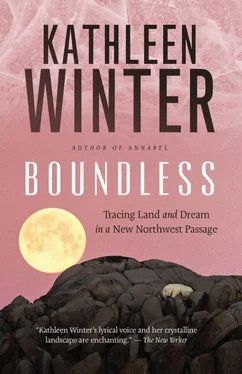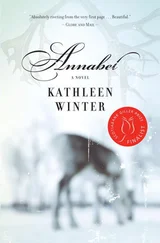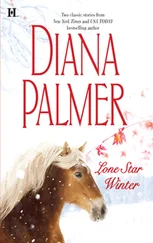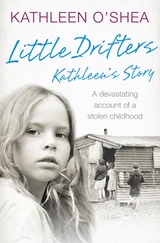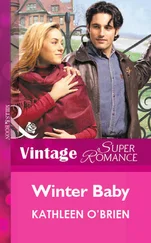“Light the medieval shirt. Light the wolf hat.”
I lit half a dozen matches and nestled their flames among the floating materials, and at first I thought none of it would catch. But a flame caught and then came a blaze that we knew would grow and not fizzle out. Christine took out a pair of scissors I had not known about, and she cut the string that connected the raft to our boat, and she rowed us farther out into the bay so we could look at the blaze. It burned and floated on top of the dark water, and we heard a commotion from the little gathering on the beach far away as they watched it too. There was something alchemical and primal and magical about seeing such a big fire floating on the sea, and knowing what it contained. There was always the thought, coming from some corner of life or of death or of the basement where the burning things had so long lain, that we shouldn’t be doing this. But stronger than that thought came the feeling that it was right; it was liberating. As the blaze continued to burn, Christine rowed, slowly, in a widening circle around the flames, asking if I wanted to stay at this vantage point or keep moving, and obeying every time I asked her to hold still or row some more. Every now and then we’d stop in the ocean, and she would make an S curve with her oar so that we could stay in one spot, and I could feel the satisfaction of watching the destruction of everything that had tried to trap and hold me to sad or difficult memories. The trappings were all going up in flames, and the ocean was going to swallow them.
I don’t know how Christine knew how to conduct the timing of it all, but at some point while the fire was still going, but was perhaps diminishing, she asked if it was okay with me that we slowly return to shore. I said it was, and she rowed so I could continue to watch the flames, and she somehow timed it so that the very last flame was burning small and lonely as I heard the pebbles of the shoreline schmizzle under our dory, and I felt the love and support and comfort of our shore companions, who were silent now, as we all watched that last flame. And as that flame died, what should Christine and her Viking funeral somehow bring to pass, but from the eastern edge of the sky to the western hem, a slow-burning, blazing-white shooting star.
Now the rocking of our ship gave me that feeling, again, of land troubles falling away, dissolving. There is no line or corner in a wave, no way for cares of the world to hook or snag you. Floating up the southwest coast of Greenland toward the villages of Sisimiut, Ilulissat, and Upernavik was an extension of that healing journey in Christine’s little Viking boat, unmoored and heading for the unknown.
IN SOUTHWEST GREENLAND the land reminded me of Newfoundland, yet we were far enough north that the similarities had limits. Greenland’s fireweed is Chamerion latifolium , a dwarf cousin of the lupin-shaped plumes that signal late summer in Newfoundland and the rest of southern Canada; it struck me as brave and diminutive, somehow insistent despite its size. It called your eye to itself and said, “Be honest and clean-cut, no need to shout or loom large, or be in any way extravagant” — perhaps an apt message for Greenland’s national flower.
The Danish influence gives southern Greenland a bright, neat appearance: there’s an atmosphere of crisp freshness and industry. Houses sit neatly on rocky hills, painted in loud primary colours that shout cheer along with the daisies’ and fireweed’s yellow and purple. There’s a European modernity, imposed on an ancient land whose dwellers go back 4,500 years to people of the Saqqaq, Dorset, and Thule cultures — who share ancestry with Canada’s Inuit and whose diet traditionally consisted of fish, birds, whale, seal, and reindeer. I was familiar with the American writer Gretel Ehrlich’s stunning book This Cold Heaven , in which she chronicles seven seasons travelling in Greenland by dogsled and kayak, with local hunters and descendants of the famed Danish-Inuit explorer Knud Rasmussen. Greenland’s north, according to Ehrlich, remains a place of ancient ways, imperilled but mostly intact — but here in the southern part, old hunters have begun to trade a life of precarious freedom and hardship for work in the Danish fishery, and it is now not uncommon for people to pay a high price for a Danish chicken rather than eat wild auk or seal.
Our first stop, Sisimiut, might have been 75 kilometres north of the Arctic Circle, but the currency was Danish kroner. I visited shops and saw aisles of the same cheese graters, plastic hair clips, pink wafer biscuits, and packets of licorice I’d seen in suburban European and North American discount shops. There were shiny packets of Danish cookies and all manner of European goods. Like the houses, boats, and picket fences around the local graveyard, everything in the Danish shop aisles was tidy and groomed, as if someone kept watch over the whole set-up to ensure it did not depart from a northern European sense of order. Yet underlying Sisimiut’s imposed Danish brightness lingered something indestructible and indigenous to the Arctic.
It reminded me of the islands of St-Pierre and Miquelon off the southern Newfoundland coast: owned by France and kept as a symbolic remnant of colonial proprietorship, their rock and shore know cod and wild horses, rum and puffin and tern. They know bleak grey tides and summers not even the dreamiest French impressionist could render dappled or soft. Yet the shops sell French produce: wine, slender green beans, French butter, and baguettes. The schools have French classrooms whose students are taught the French history children learn in Paris. While there is scarcely enough road to take a Sunday drive, the residents possess Citroens, Renaults, and Peugeots. In St-Pierre and Miquelon this tension — between the old geography of rock jutting out of the north Atlantic and the imposed culture of France — creates a forlorn atmosphere, as if the towns are in a time capsule; child-towns orphaned by a mother country who claims them for bureaucratic reasons. There persists a feeling that the place lies forgotten when it comes to love.
Greenland has a different understory. The Danish influence feels closer, more current and immediate — but it also feels like a layer superimposed on that long-standing other culture, where people survive by clinging to an old connection with the animal world. Underpinning that connection, and making it possible, is the fact that in Greenland, unlike in northern Canada, people have held on to their working dogs.
Indeed, the first thing I noticed after the layer of Danish influence was the dogs. In the villages of southwestern Greenland, every shed has colourful ropes and dog harnesses hanging from hooks and nails. As I took to the lanes and paths, Greenlandic huskies watched me from their posts on tussocks and stones with their dark, intelligent eyes. On the paths, I encountered more dogs than people, and I realized that the human population of these little towns — lulissat is home to 4,000 — s tiny compared to the number of dogs.
I had a sort of enchanted status on the ship, since I was hired to be a resident writer; but I’d been engaged at the last minute, so my status was unofficial. I didn’t have teaching duties like other resource staff — passengers began breaking off to form coteries around their experts of choice. Marc St-Onge explained the glacial fjords. Filmmaker John Houston told us how to relate to people on the land and screened his new film, The White Archer , a drama based on a story in his father James Houston’s 1967 collection of Inuit legends.
“Be brave,” Houston told passengers. “Give when you’re out in the community. If you’re speaking through a translator, look into the person, not at the translator.”
Читать дальше
